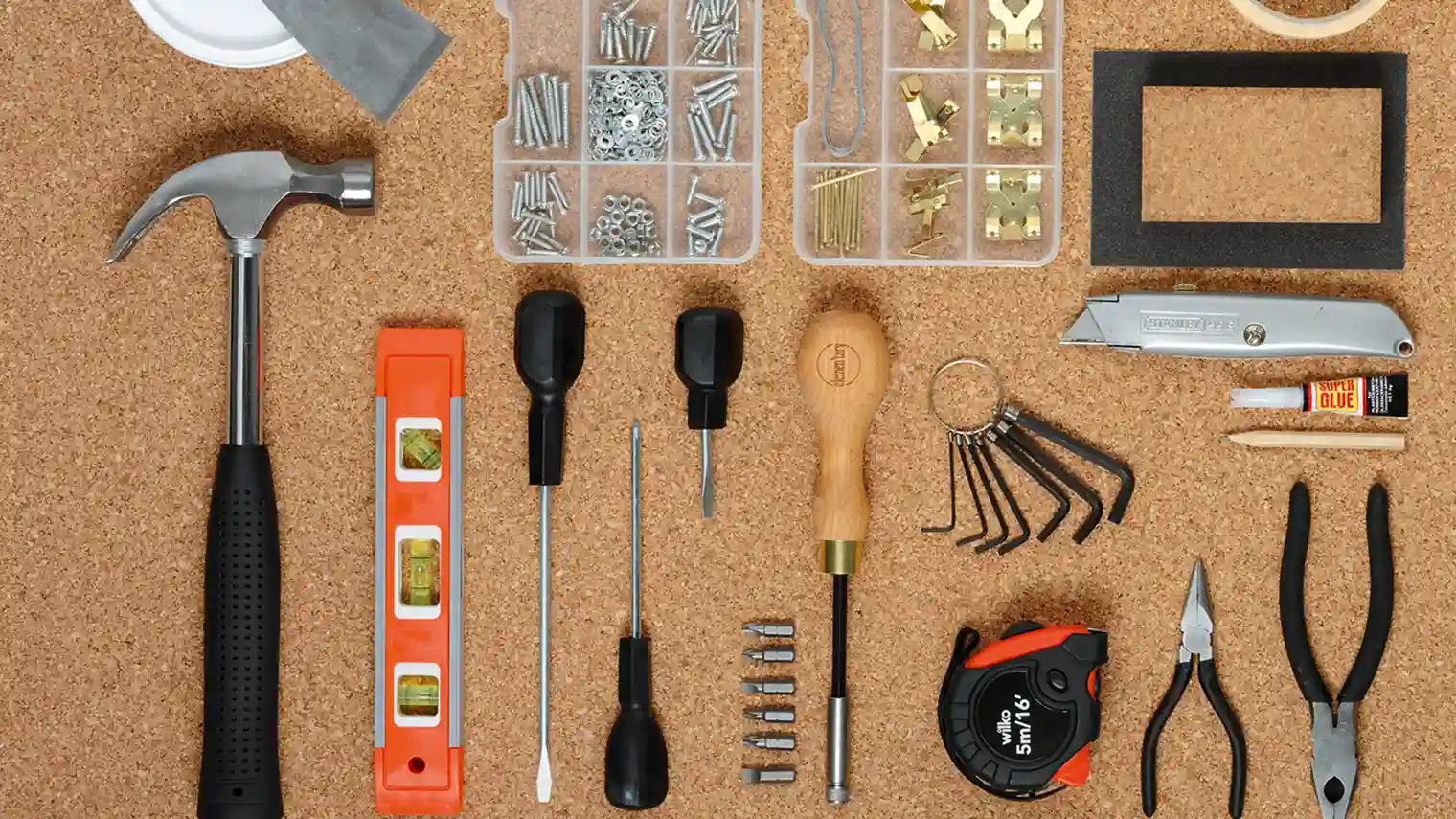Embarking on home improvement projects is an empowering journey that allows homeowners to transform their living spaces into personalized havens. However, to navigate this journey successfully, you need the right tools in your arsenal. From basic hand tools to power equipment and safety gear, this guide explores the essential tools every homeowner should have to tackle DIY projects with confidence and efficiency.
Basic Hand Tools: The Foundation of Every Toolbox
- Hammer: A versatile tool for driving nails, removing unwanted fixtures, or light demolition work.
- Screwdrivers: An assortment of flathead and Phillips screwdrivers for assembling furniture, tightening loose screws, or installing fixtures.
- Pliers: Adjustable pliers for gripping and turning objects, and needle-nose pliers for reaching into tight spaces.
- Utility Knife: Handy for cutting materials like cardboard, plastic, or drywall during construction or repair tasks.
- Tape Measure: Essential for accurate measurements when planning and executing projects, ensuring precision and consistency in your work.
Power Tools: Amp Up Your DIY Game
- Cordless Drill/Driver: Versatile and convenient for drilling holes, driving screws, and assembling furniture with ease.
- Circular Saw: Ideal for cutting lumber, plywood, or other materials with precision and efficiency.
- Jigsaw: Perfect for cutting curves and intricate shapes in wood, plastic, or metal.
- Random Orbit Sander: Essential for smoothing rough surfaces and removing paint or varnish before refinishing.
- Power Drill: A multipurpose tool for drilling holes, driving screws, or stirring paint, making it a must-have for any homeowner’s toolkit.
Leveling and Measuring Tools: Precision Made Easy
- Combination Square: Perfect for measuring and marking 90-degree angles accurately.
- Spirit Level: Ensures horizontal and vertical alignment for hanging shelves, pictures, or installing fixtures.
- Laser Level: Provides precise, hands-free leveling for larger projects or room-scale measurements.
- Stud Finder: Essential for locating studs behind drywall, preventing damage when hanging heavy objects or installing fixtures.
Safety Equipment: Protect Yourself and Your Investment
- Safety Glasses: Shields your eyes from flying debris or dust particles during cutting, drilling, or sanding tasks.
- Work Gloves: Protects your hands from cuts, abrasions, or splinters while handling materials or using tools.
- Dust Mask: Prevents inhalation of harmful dust particles or fumes generated during sanding, cutting, or painting.
- Ear Protection: Guards against hearing damage from loud power tools or machinery, ensuring long-term auditory health.
Tool Storage and Organization: Keeping Your Gear in Check
- Toolbox or Tool Bag: Provides portability and easy access to essential tools for quick fixes or small projects.
- Tool Chest or Cabinet: Offers ample storage space and organization for a larger collection of tools, keeping them secure and accessible.
- Wall-Mounted Tool Rack: Utilizes vertical space to store frequently used tools within arm’s reach, maximizing efficiency and workspace.
Maintenance and Care: Prolonging the Lifespan of Your Tools
- Cleaning and Lubricating Tools: Regularly clean and lubricate moving parts to prevent rust, corrosion, or wear and tear.
- Sharpening Blades: Maintain cutting edges sharp and effective with regular sharpening to ensure clean, precise cuts.
- Storing Tools Properly: Store tools in a dry, climate-controlled environment to prevent rust, damage, or premature deterioration.
Final Words
Equipping yourself with the essential tools for home improvement empowers you to tackle projects with confidence, efficiency, and safety. By investing in quality tools and maintaining them properly, you can unleash your creativity, unleash your creativity, and transform your living spaces into personalized reflections of your style and vision. So, gear up, get inspired, and embark on your DIY journey with the right tools by your side.
FAQ’s
Do I need all the tools listed for basic home maintenance?
While having a comprehensive toolkit is beneficial, you can start with essential hand tools like a hammer, screwdrivers, pliers, and a tape measure for most basic repairs and maintenance tasks.
Are power tools necessary for DIY projects, or can I manage with hand tools?
Power tools offer efficiency and precision, making them invaluable for many DIY projects. However, for simpler tasks or if you’re on a tight budget, basic hand tools can suffice.
How do I choose the right power tools for my needs and skill level?
Consider the types of projects you plan to undertake, your familiarity with power tools, and your budget. Start with versatile tools like a cordless drill/driver and gradually expand your collection as needed.
Why is safety equipment important, and when should I use it?
Safety equipment protects you from injuries and hazards associated with DIY projects. Always wear safety glasses, gloves, dust masks, and ear protection when using power tools or working with materials that produce dust, debris, or noise.
What should I prioritize when organizing and storing my tools?
Prioritize accessibility, organization, and protection. Keep frequently used tools within easy reach, organize them by type or function, and store them in a dry, climate-controlled environment to prevent damage and ensure longevity.
